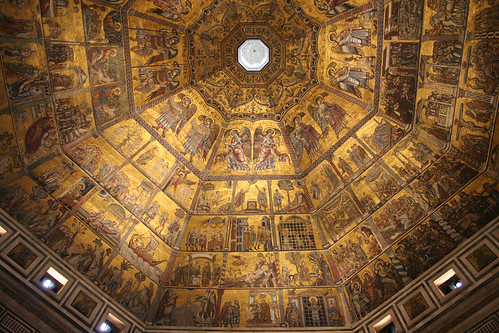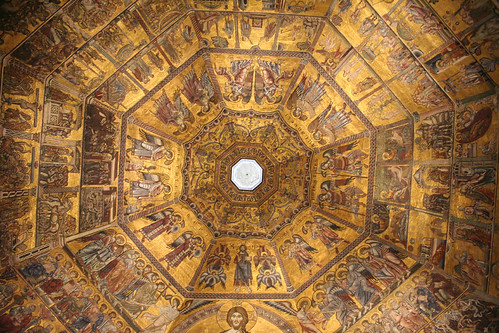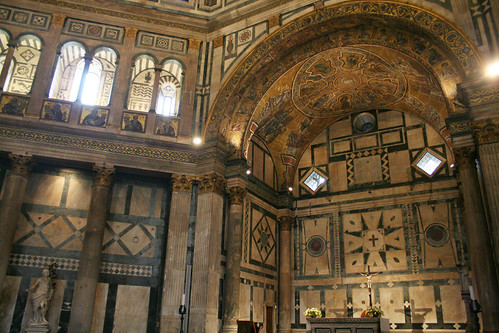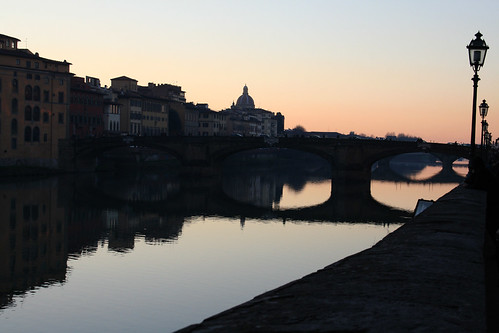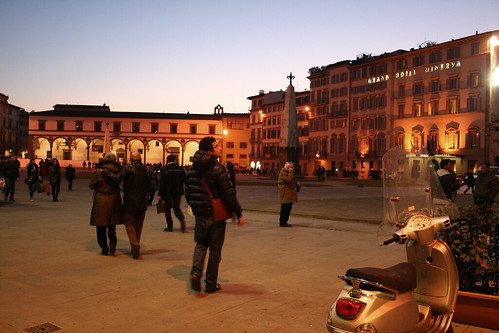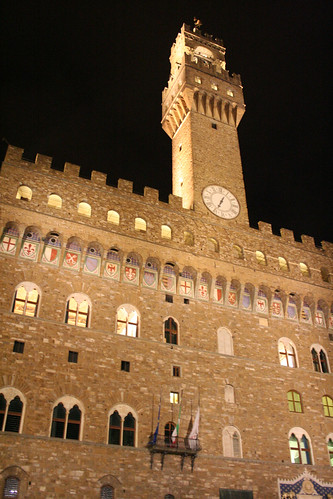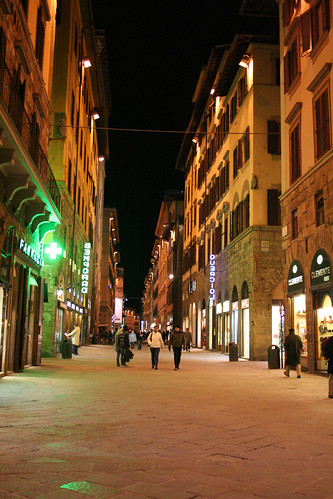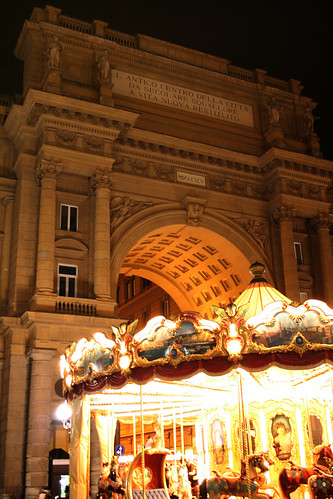It's easy to get to Fiesole: catch the number 7 bus from central Florence and let it take you away from the busy sidewalks and the tightly-packed buildings, wind and rumble up the hills to the north of the city, and arrive in the quiet, open Piazza Mino, with the slope of the hill facing Florence on one side and the Duomo and belltower prominent on the other.

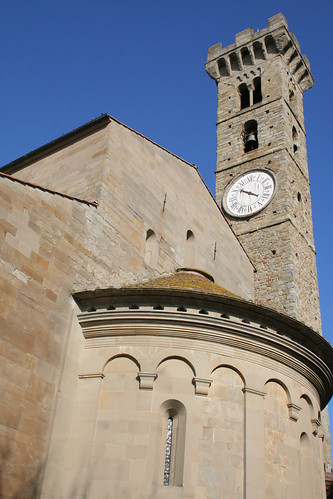
It was incredibly cold when Mom and I were there, and being on top of a hill, it was quite windy as well. During the hot summer months, Fiesole has been a popular vacation spot for wealthy Florentines for this very reason; even in Roman times, the rich kept summer homes here to escape the heat of the valley. It was once an Etruscan settlement, evidenced by the walls and artifacts preserved in its several museums; known then as Faesulae, it was conquered by the Romans in the early 3rd century BCE.
Speaking of the Romans, Fiesole's oldest outdoor attraction is a Roman amphitheater and surrounding ruins.
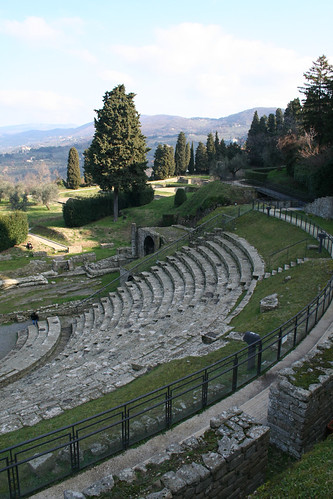
Overlooking the rolling Tuscan hills, the theatre is more than two thousand years old and can seat that same number of people. Not only can you walk around in it, but it is still used for theatrical productions to this day!
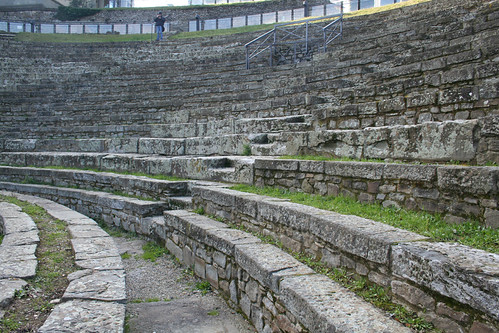
Oh, yes, and our tour guide was a cat.
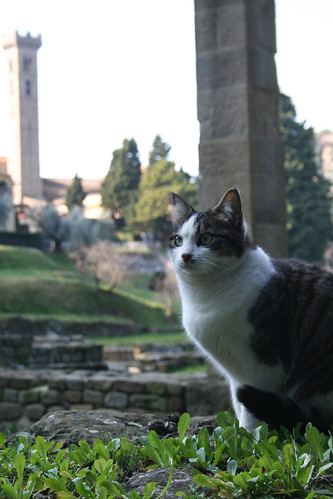
I'm not kidding. He was always either just ahead of my mother and me or right on our heels as we followed the paths through the ruins, occasionally going off the trail and giving us disapproving looks when we did not follow.
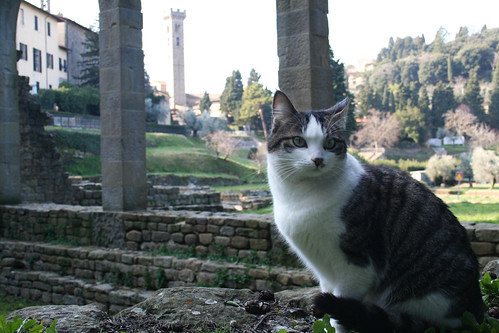
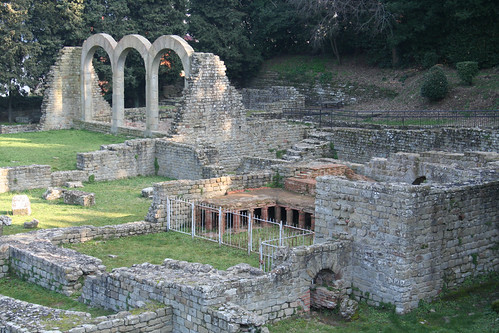
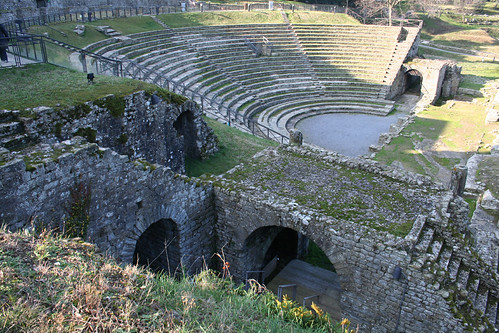
The other side of the ruins are a bit less interesting, but the remains of pillars and the foundations of buildings can still be seen.
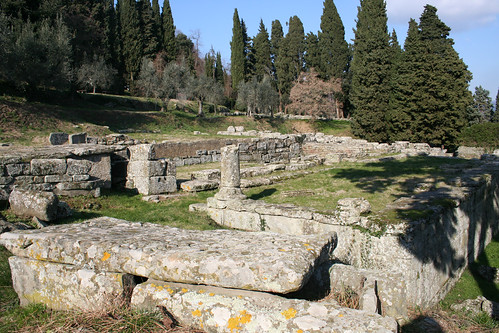
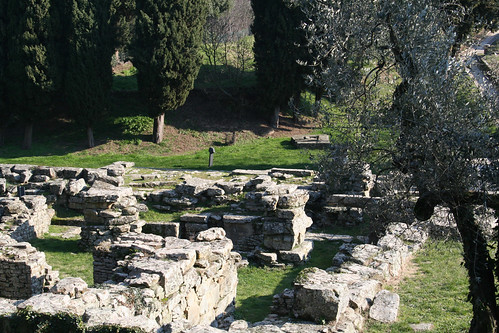
Included in the price of admission to the theatre is a museum that contains Etruscan and Roman artifacts—art, coinage, and weapons, as well as human and animal remains. The gift shop had pots and pitchers made to look just like the ancient Etruscan ones.
From the side of the hill facing the valley, there was an unbelievable view of Florence, where the highest buildings in the city just barely reached up through the haze.
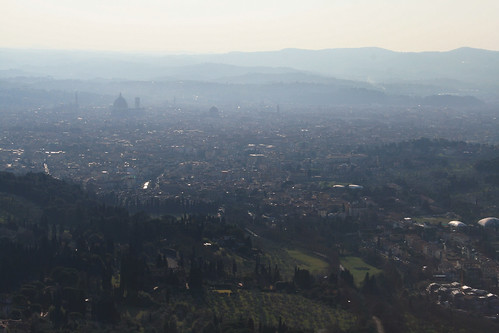
It's probably an even better view when it's clear, but whatever.
If you head all the way up to the top of the hill, you find the church and monastery of San Francesco. Beneath the church is a quaint but still interesting ethnographic museum kept by the monks, which includes ancient books and religious items, an array of art and curios from China (many sent home to Italy by Catholic missionaries), and Roman, Etruscan, and Egyptian archaeological findings (highlights include yet another mummy, and an in-situ Etruscan wall).
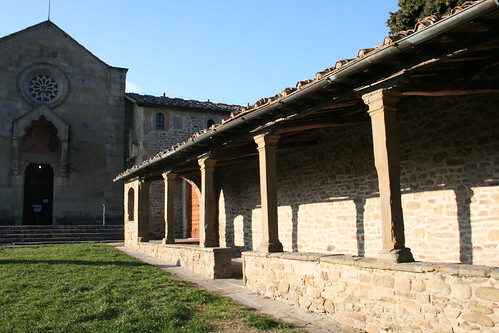
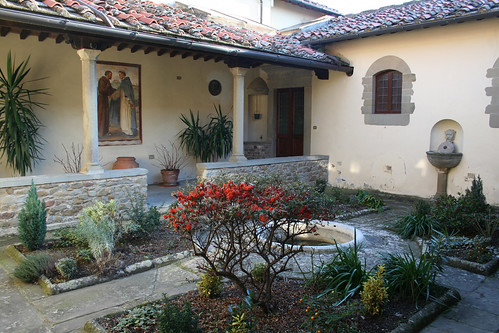

Lastly is Fiesole's Duomo in the town's main piazza. It is fairly drab inside and out, but like many of these old churches, there is a kind of serenity to the austere brick and stone. It is meditative in its simplicity—all the better to appreciate the mathematics of the space.
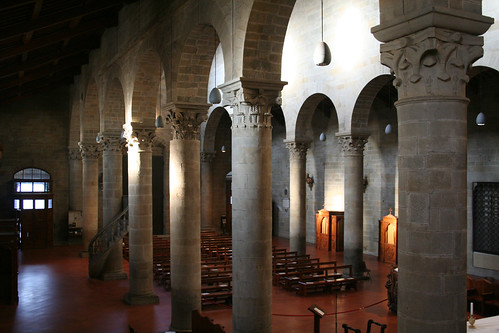
And that is all from Fiesole! I won't divulge the contents of my next planned post, but if all goes as planned, it will make you want to lick your computer screen.
Until next time! Ciaociao!

